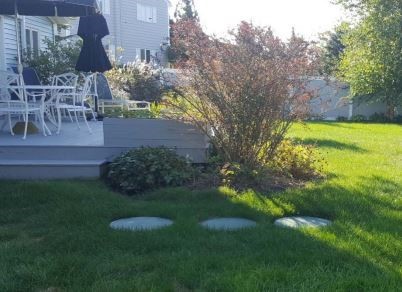In this month’s issue of the LINAP newsletter, we highlight the ongoing nitrogen reduction initiatives lead by our LINAP partners in Suffolk County.
Subwatersheds Wastewater PlanSuffolk County’s Subwatersheds Wastewater Plan (SWP) has evaluated parcel-specific nitrogen loads from wastewater, fertilizer, stormwater, and atmospheric deposition to the groundwater and receiving waters of nearly 200 subwatersheds identified by Suffolk County and stakeholders, including the Wastewater Plan Advisory Committee. The SWP initiative includes the development of first order (initial) nitrogen load reduction goals; establishes ecological sensitivity priority ranks for each of the surface waterbodies, based on nitrogen; and recommendations for implementation of a phased countywide wastewater upgrade program. Work on the SWP began in summer 2016. A draft plan is expected to be released for public comment this summer and the final plan to be released by the end of 2019.
Photo credit: Kyle Rabin Septic Improvement ProgramOver the past several years, Suffolk County has effectively laid the groundwork to make the transition from outdated cesspools and septic systems to newer, state-of-the-art systems. Under the County’s Septic Improvement Program, individual homeowners may be eligible for a grant for the purchase and installation of an approved Innovative/Alternative Onsite Wastewater Treatment System and associated engineering and design services. Under the program, homeowners who decide to replace their cesspool or septic system with the new and advanced technologies will be eligible for a grant of up to $30,000 from Suffolk County and the New York State Septic System Replacement Fund to offset the cost of one of the new systems. In addition to the grant, homeowners can qualify to finance the remaining cost of the systems via a loan, payable over 15 years at a low 3% fixed interest rate. The purpose of the loan is to provide “gap” funds to finance the difference between the grant to be provided by Suffolk County and the contract amount needed to install the replacement septic system. Since July 3, 2017, over 1,700 people have registered for the program, of which 435 have been issued grant certificates. An additional 444 are in the process of submitting an application. To date, there have been 111 installs and there are 132 pending installations. Septic/Cesspool Upgrade Program Enterprise (SCUPE)During 2018 and 2019, Suffolk County continued to examine new technology through its DEC-funded Septic/Cesspool Upgrade Program Enterprise (SCUPE). At total of 14 individual technologies have been installed on 43 residential sites. Six technologies have been approved for Provisional Use in Suffolk County. Three additional systems are currently pending Provisional Use Approval and expected to be approved this summer. The County is working with the remainder of the manufacturers to improve performance.
|






